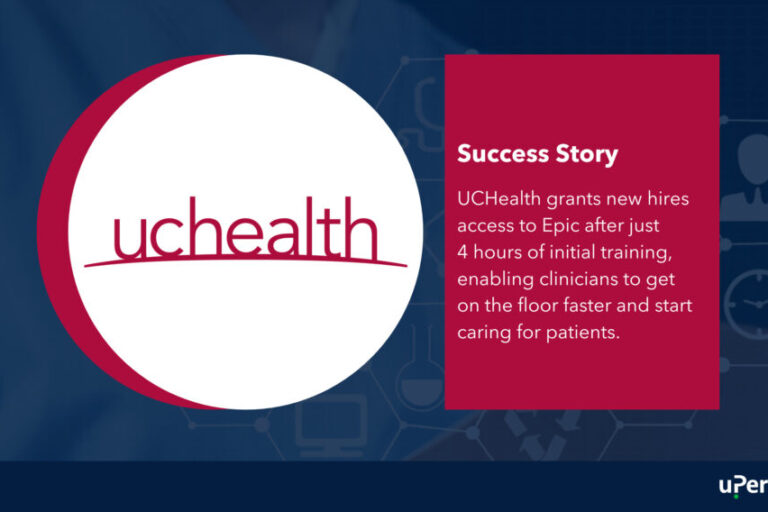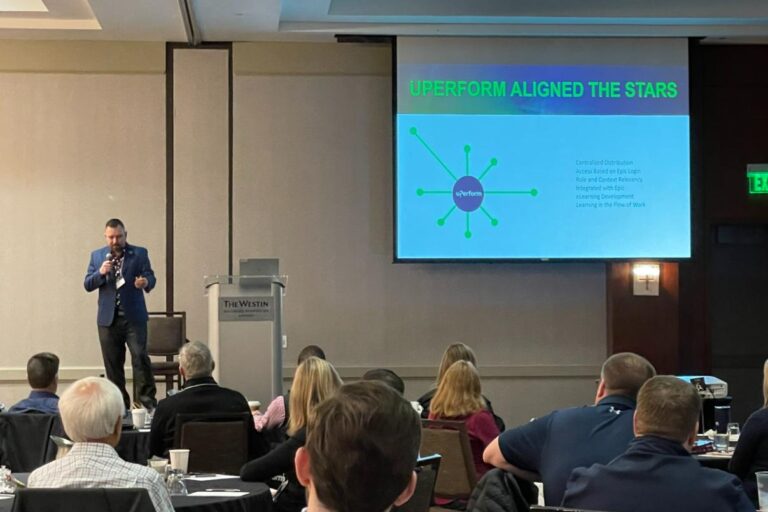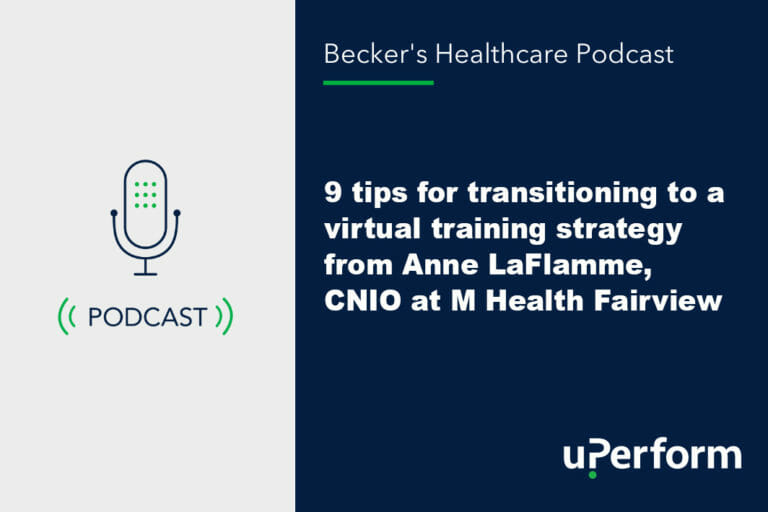Following up on its case study conducted by KLAS Research Arch Collaborative, M Health Fairview presented new findings at this year’s KLAS Arch Collaborative Learning Summit. The presentation provides additional insights into how the system is delivering more effective learning opportunities and new metrics that speak to Fairview’s ability to deliver health IT education at scale.
The Minneapolis-based health system first made the switch to a virtual education strategy in 2020 to address the system’s training needs during COVID-19. Once a skeptic of conducting training outside of the classroom, Learning and Development System Manager Derek Harley now can’t imagine delivering training any other way.
As Fairview continues to refine its Epic® training strategy, it’s proving to be a faster, better, and more effective way to train.
New Hire Onboarding Transformation
Needing to scale new hire onboarding across a footprint spanning Minnesota and western Wisconsin, Fairview’s Education Team decided they needed to rethink their approach. Harley’s team chose to transition 135 instructor-led classes to virtual, asynchronous onboarding with uPerform. As of May 2025, with 80% of its roles transitioned, Fairview has given nearly 17,000 hours back to clinicians previously spent in training. By switching to computer-based training, Fairview saves $1.5 million in training costs and thousands of hours of clinician time in onboarding annually. These wins contribute directly to the organization’s larger strategic workforce efforts that led to its multimillion-dollar financial turnaround.
Right Place, Right Time Learning
In addition to onboarding, Fairview’s strategy leverages uPerform to deliver self-directed, ongoing learning to Epic users directly in their workflow. These asynchronous learning opportunities are offered in a variety of formats, including:
- Self-guided learning pathways
- Workflow content embedded within Epic
- Communications and notifications in the Epic F1 dashboard
Fairview has also found success using uPerform to support Epic go-lives and upgrades. For instance, when Fairview launched its new Epic eConsent tool, they first experienced low adoption. Using uPerform, they created how-to video and embedded it into the eConsent navigator. Adoption of the new tool jumped from 7% to 87%. This is just one example of how Fairview leverages in-application support to drive results.
Self-Directed Virtual Learning Wins
Fairview’s 2024 case study highlighted the system’s success with its training strategy. For users of uPerform, it reported a 19-point higher Net EHR Experience Score (NEES), higher agreement that the organization and IT leadership deliver well, a 76% reduction in time authors spent on education content creation, and more.
But Harley shared additional data during his presentation that sheds more light on what can boost success. They found that among physicians who are “deep adopters” of learning resources (users who leveraged all three offerings available in uPerform – F1 Dashboard, Learning Library, and Support Chat), the improvement across key metrics was even greater.
- 27% improvement in agreement that ongoing training is sufficient
- 10% improvement in agreement that training is workflow-specific
- 28% improvement in agreement that changes are well communicated
- 15% improvement in agreement that the organization delivers well
- 38% improvement in agreement that EHR support is timely
Harley notes, “I’ve never seen top percentiles in my overall NET EHR satisfaction score, but when we look at deeply engaged end users, this is what happens — it’s incredible. So now it becomes, how do we make everyone a more engaged user?” These improvements signal a clear trend – driving success starts with improving engagement with asynchronous learning resources.
Related Articles
CASE STUDY: M Health Fairview navigates change and supports users in the EHR
In 2019, M Health Fairview recognized that its learning ecosystem was fragmented and difficult to navigate for users. After researching various solutions, the team chose to partner with uPerform to create a unified learning experience for users and scale learning opportunities.
For more insights from the survey data, read the full case study below.
Best Practices & Keys to Success
Developing a successful training program not only requires the necessary tools, but a refined strategy and an Education team passionate about supporting its clinicians.
For systems looking to improve their health IT education program, Harley emphasizes the following keys to success:
Keys to Success:
- Create a centralized source for end-users to access education resources, contact support, and request additional training
- Select a learning solution that will act as a partner in improving education and support for not only clinicians, but all EHR users
- Generate buy-in from organizational leadership and measure the value your team is bringing to the organization
Part of Fairview’s success is that the team constantly strives for improvement. And despite its recent success, Harley and his team have no intention of slowing down. Fairview is currently implementing uPerform Copilot to further improve user access to learning content, which it looks forward to rolling out this fall.
PODCAST: Anne LaFlamme, CNIO at M Health Fairview, shares 9 tips for transitioning to a virtual Epic training strategy
As Anne and M Health Fairview were preparing for a series of acquisitions and mergers, they realized their in-classroom Epic training strategy was unsustainable for their anticipated growth. In this Becker’s Healthcare podcast episode, Anne breaks down the factors that led to M Health Fairview’s successful transition to a virtual Epic training strategy.
Tune in to the full episode by clicking the link below.
Contact Us
Fairview’s success showcases the transformative power of asynchronous health IT training. By shifting to virtual, self-directed education, they’ve not only streamlined onboarding but also boosted user engagement and satisfaction with Epic. If you’re inspired by Fairview’s journey and want to learn how uPerform can help you meet your training goals, please contact us.











